Suomi's country's air defenses (part 4)
By the time the outbreak of hostilities against the USSR (25 June 1941 of the year) in Finland there were no specialized anti-aircraft guns of a caliber larger than 76 mm. For this reason, attempts were made to adapt coastal defenses for shooting at enemy planes: 105-mm Bofors and 152-mm Sanet. To do this, the Finns had to make changes to the design of the guns in order to increase the angle of elevation and create remote fuses for projectiles.
In 1918, about a hundred 152-mm Kane guns remained in Finland at the end of 30, some of them were modernized by changing the recoil devices and increasing the elevation angle to 49 degrees, which made it possible to conduct anti-aircraft fire. Also guns received armor shields to protect the calculations from the fragments. A fragmentation projectile with a remote fuse that left the barrel at a speed of 830 m / s could hit air targets at a distance of more than 10000 meters. Combat rate of fire was 4 — 5 shots per minute. Swedish range finders and mechanical computers were used to control anti-aircraft fire. According to Finnish data, coastal batteries managed to shoot down several Soviet bombers and one fighter.
The most modern medium-caliber anti-aircraft guns were the 75 mm M29 and M30 guns delivered from Sweden. Most of these guns, reduced to 4-6 gun anti-aircraft batteries, had Swedish or British-made fire control devices. In the continuation war, Soviet raids aviation reflected more than a hundred Swedish anti-aircraft guns. Some of them were installed on the coast and guns could be used for firing at sea targets.
In 1941, Germany became the main supplier of anti-aircraft guns. But these were not German modern anti-aircraft guns, but trophies seized in other countries. In June, the 24 French 75-mm anti-aircraft guns M / 97-14 Puteaux arrived in Finland.
Anti-aircraft gun, based on the Schneider 75-mm field gun mod. 1897 of the year, already out of date by the beginning of the 30's. The French Aufiere fire control system was inconvenient in operation and could not fire at targets flying faster than 340 km / h. The “Putoto” cannons with an initial speed of 6,25 kg of the 530 projectile, m / s, had an effective range of no more than 4000 meters. Rate of fire - up to 15 shots / min. The low speed of the projectile, even within reach, in range and height, did not allow for effective combat with high-speed combat aircraft. And the main fire regime of the French anti-aircraft guns was barrage fire.
In addition to the outdated French anti-aircraft guns, the Germans sold 20 guns from the Skoda 7,5 cm Kanon PL corner. 37 and 5 fire control devices captured in Czechoslovakia. Also Finns got 56 000 shells. According to its characteristics, this weapon was close to the Swedish guns M29 and M30. With an initial speed of 775 m / s, a fragmentation shell with a mass of 5,5 kg could reach a height of 9000 meters. Practical rate of fire 10-12 rds / min.
But the French and Czech anti-aircraft guns did not strengthen the Finnish air defense. The main additions to the Finnish air defense units in the initial period of the war were the Soviet 76-mm guns of the 1931 model of the year (3-K) and the model of the 1938 of the year. In Finland, they received the designation 76 ItK / 31 and 76 ItK / 31-40. In the second half of 1941, the Finnish forces captured 46 76-mm Soviet anti-aircraft guns (42 sample 1931 and 4 sample 1938) and more 72 guns received from the Germans.
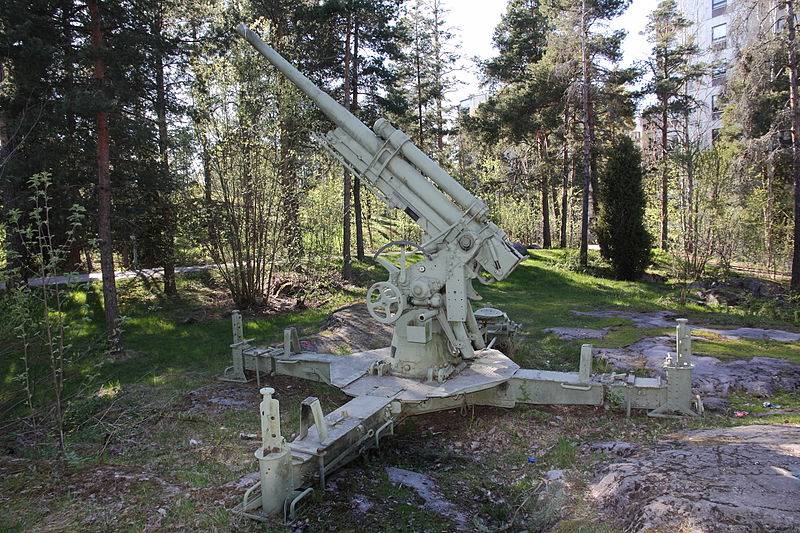
For its time, these were quite modern and effective anti-aircraft guns, not inferior in combat characteristics of 75 mm guns "Bofors" and "Skoda". With a combat rate of fire of 15 shots / min, the 3-K can fire at air targets at heights up to 9000 meters.
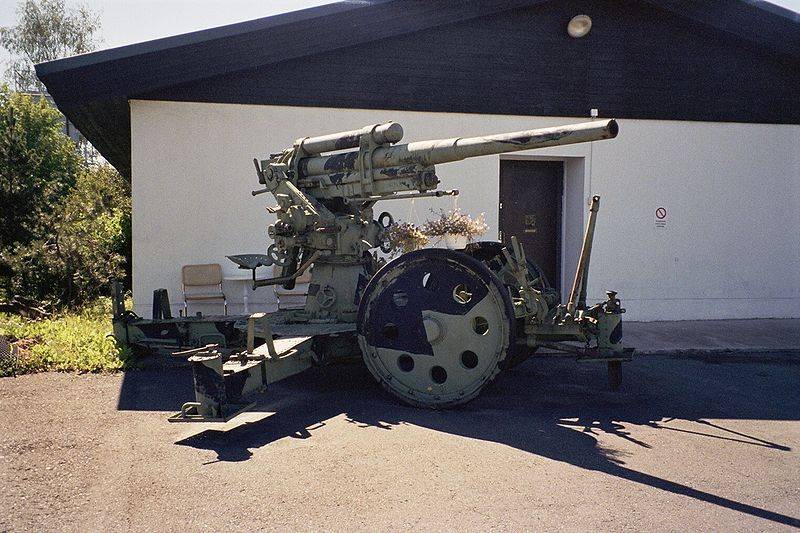
To control the fire of Soviet 76-mm anti-aircraft guns in Finland, regular Soviet PUAZO or Czechoslovak M / 37 Skoda T7 were used. After the end of World War II, the former Soviet 76-mm anti-aircraft guns were transferred to the coastal defense, where they served until the middle of the 80-s.
In 1941, the Finnish army on the Hanko peninsula captured two anti-aircraft 85-mm guns of the 1939 model of the year. But, since there were no fire control devices for these anti-aircraft guns, they could only conduct barrage fire. In the first half of 1944, Finland bought 18 Soviet 85-mm guns, whose caliber in Germany was increased to 88 mm. Former Soviet guns received the designation 88 ItK / 39 / 43 ss in the Finnish armed forces. Modified 88-mm anti-aircraft guns, according to the firing tables could fire at air targets at a distance of up to 10500 meters. Practical rate of fire - 15 rds / min.
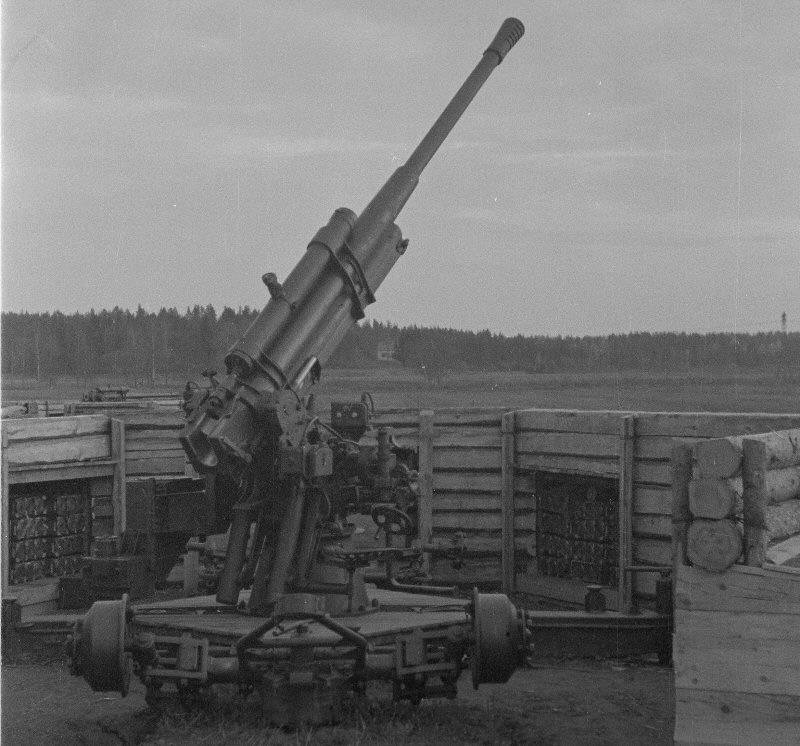
Guns with dismounted wheels are combined into six-battery batteries installed in long-term positions. For fire control, French equipment PUAZO Aufiere was used. After the war, 88 ItK / 39 / 43 ss was transferred to the coastal artillery, where they were in service until the 1977 year.
Since the spring of 1943, the delivery of German anti-aircraft 88 mm Flak 37 guns to Finland began. From the earlier models of the Flak 18 and Flak 36, this gun differed in its design and gun manufacturing technology developed by Rheinmetall. An important improvement in the design of the gun was the manufacture of the barrel from several parts, which made it possible to replace its worn fragments directly in the field. The guns were supplied in two versions, the first batch included 18 anti-aircraft guns on a wheeled gun carriage, another 72 guns, obtained in June 1944, were intended for installation on stationary concrete bases.
Unlike earlier “eight-eight” models, the Flak 37 guns were equipped with the Ubertransunger 37 automatic pick-up system, according to the data transmitted by cable from the anti-aircraft battery fire control equipment. Due to this, the speed and accuracy of aiming increased. In Finland, these anti-aircraft guns received the local designation 88 ItK / 37. Simultaneously with the first batch of Flak 37, the Germans provided 6 FuMG 62 Wurtzberg 39 fire control radars.
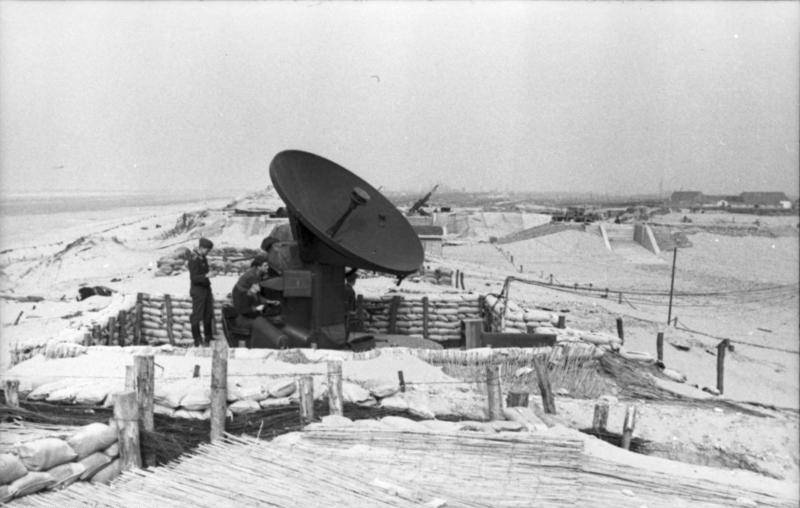
A radar with a parabolic antenna with a diameter of 3 meter, with a wavelength of 53 cm and a pulse power of up to 11 kW could correct antiaircraft artillery fire at a distance of up to 29 km. At a distance of 10 km, the error when tracking an aerial target was 30-40 meters. On the radar screen not only aerial targets were displayed, but also anti-aircraft missile explosions.
German 88-mm anti-aircraft guns of the first batch were placed in three six gun batteries in the vicinity of Helsinki. Thirty-six stationary guns of the second party also strengthened the air defense of the Finnish capital. The rest are located around the cities of Turku, Tampere and Kotka.
Finnish "know-how" was the addition to the anti-aircraft missiles of a powdered mixture of magnesium and aluminum. When the gaps such projectiles blinded the crews of bombers and facilitated the adjustment of fire. Unlike the German army, the Finnish 88-mm anti-aircraft guns were never used in anti-tank defense, but served only in air defense. Their active exploitation continued until the 1967 year, after which the guns were distributed to parts of the coastal defense, where they remained until the beginning of the 90-s.
In February 1944, when the ground segment of the Finnish air defense system was at the peak of its effectiveness, the Helsinki region defended 77 mm 75-88 anti-aircraft guns, 41 mm anti-aircraft 40 mm anti-aircraft gun, 36 spotlights, 13 sound pickups and two German radarMaMeGoGoGoGoGoGMX
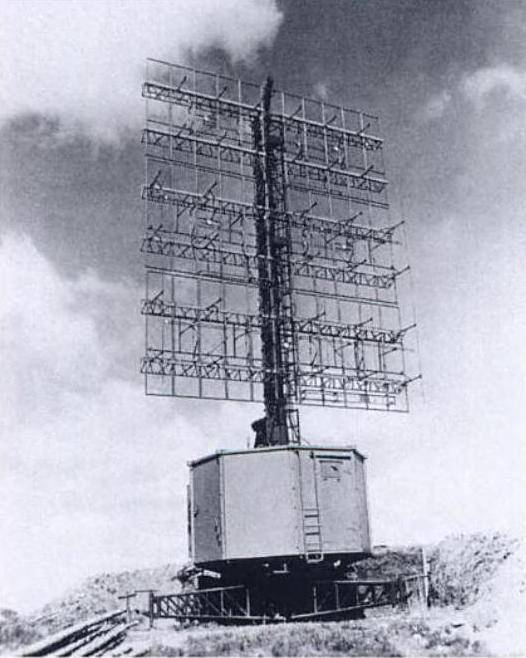
After the start of mass raids by Soviet bombers on objects deep in the territory of Finland, it became absolutely obvious that the existing air defense forces could not prevent this or at least inflict serious losses on the enemy. The actions of Finnish fighter aircraft at night were, as a rule, ineffective. Affected by the lack of anti-aircraft guns and searchlights. As practice has shown, the existing sound detectors in the northern conditions turned out to be not a very reliable means of detecting approaching aircraft. In these conditions, the German radar radar systems were a great help. A circular radar with a power of 20 kW, operating in the 162-200 MHz frequency range, could detect approaching bombers at a distance of 200 km. In total, Finland received two German Freya radar.
As mentioned in the second part of the review, during the Second World War, there were several hundred 40-mm Bofors anti-aircraft guns in the Finnish air defense units. These were guns purchased in Sweden and Hungary, as well as captured by the Germans in Austria, Denmark, Norway and Poland. In addition, about 300 "Bofors" produced in Finnish enterprises. With almost identical combat characteristics, anti-aircraft guns released in different countries often had non-interchangeable parts and different fire control systems. This seriously hampered the maintenance, repair and training of calculations. During the continuation of the war, about a dozen 37-mm automatic anti-aircraft guns of the 1939 model of the year (61-K) became Finnish trophies.
The Soviet 37-mm gun was designed on the basis of the Swedish 40-mm Bofors L 60 cannon, but it used another 37-mm ammunition with 730 g. Projectile weight. The 40-mm Bofors automatic rifle used the 900 g. Missile. the initial speed of the heavier projectile slower lost speed on the trajectory and had a large destructive effect. At the same time, the Soviet anti-aircraft gun had a slightly higher rate of fire. In the Finnish army, 37-mm guns 61-K received the designation 37 ItK / 39 ss. A design similar to Bofors L 60 was quickly mastered by Finnish calculations.
Most of the anti-aircraft guns captured in the battle were damaged and had to be repaired. In this part of the guns was completed with sights of Finnish production. But, since there were no fire control devices for Soviet anti-aircraft guns, they were often used individually at support points as a dual-use system, providing air defense and fire support in defense. But the century of captured 37-mm anti-aircraft guns in Finland was short. These guns were constantly experiencing a shortage of ammunition, shells for them in Finland have never been made. And the anti-aircraft guns themselves, deployed directly on the line of fire contact, were very vulnerable to artillery and mortar fire.
Along with the 88-mm Flak 37 guns to Finland in the form of military assistance, the Germans delivered a small number of used 37-mm 3,7-cm anti-aircraft machine guns Flak 37. Unlike the Swedish Bofors L 60 and the Soviet 61-K, the German anti-aircraft gun had a two-wheel drive, similar to 20-mm machine guns. This seriously reduced weight and increased mobility. But the German automatic cannon, designated 37 ItK / 37, had a weaker ammunition than the Swedish 40-mm Bofors and the Soviet 37-mm mod. 1939
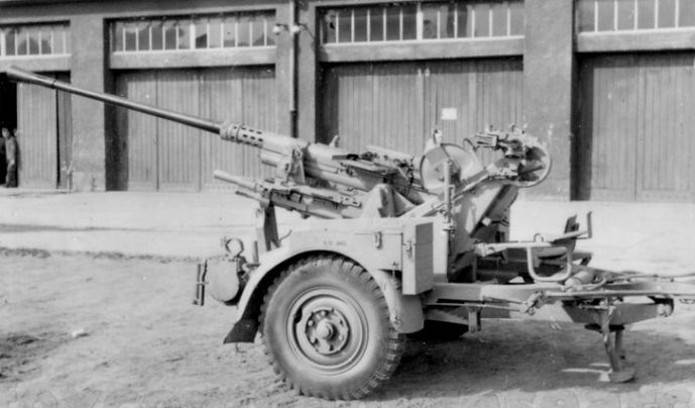
After a short period of service, only four 37-mm machine guns remained in working condition, and the rest failed. Their repair was delayed and after the end of hostilities, all German anti-aircraft guns were quickly written off.
During the Winter War, the Finns were in dire need of small-caliber anti-aircraft guns and therefore acquired everything they could. In December 1939, the Finnish representatives managed to conclude a contract for the supply of 88 Italian 20-mm anti-aircraft guns Canon mitrailleur Breda de 20 / 65 mod.35. However, for political reasons, the Germans temporarily blocked the supply of anti-aircraft guns, and they arrived in the summer of 1940. In Finland, the Italian 20-mm automata received the designation 20 ItK / 35, Breda.
This anti-aircraft machine gun was created on the basis of the French large-caliber 13,2-mm machine gun Hotchkiss Mle 1929 and, inheriting from Hochchiss, the automatic venting used the newest Swiss ammunition 20X138В - the most powerful of the existing 20-mm shells. The barrel length of 1300 mm (65 gauges) provided the projectile, which had a speed of 850 m / s at the muzzle, excellent ballistics. Power was supplied from rigid clips on 12 shots that could be joined together. At a distance of 200 meters projectile punched 30-mm homogeneous armor. With a mass in the combat position of 330 kg and a firing rate of 550 rounds per minute, the anti-aircraft gun could fight air targets at a distance of up to 2200 meters.
Weapon It was advertised as a dual-use system capable of striking light armored vehicles besides fighting air targets. During the fighting on the Karelian front, 20 ItK / 35 Breda was often used for infantry fire support and as a light anti-tank weapon. Part of the machines installed on trucks for anti-aircraft cover of transport columns. Since these anti-aircraft guns were often used in front-line or front-line, their losses were higher than those of other 20-mm systems. However, the Breda anti-aircraft guns were in service in the Finnish army until the middle of the 80's.
Along with the purchase of anti-aircraft weapons abroad, Finland developed its own 20-mm automata. A double-barreled 39-mm 20 ItK / 20 VKT anti-aircraft gun was created on the basis of the L-40 anti-tank gun by the designer Aimo Lahti. In this weapon, shells 20x138 B were used, the same as in German and Italian machine guns.
The weapon turned out to be excessively heavy, the weight in the combat position - 652 kg. With a total rate of firing of two 700 barrels / min, the combat rate of fire did not exceed 250 lines / min. The ammunition was carried out from box stores with a capacity of 20 shells. In total, the Finnish industry has produced just over two hundred 20 ItK / 40 VKT.
The twin machine was transported on a two-wheeled trailer. Due to the small road trailer and not too strong construction, towing could be carried out only on good roads and at a speed of no more than 30 km / h. Despite the modest combat performance and low mobility, the Finnish military rated the 20 ItK / 40 VKT quite high. These anti-aircraft guns remained in service until the beginning of the 70-ies of the last century.
By the number of samples of anti-aircraft weapons used in the troops, apparently, Finland was not equal. In addition to the described 20-mm anti-aircraft guns, the troops had small-scale single and twin designs of Aimo Lahti of the pedestal type, representing Finnish versions of Oerlikon L assault rifles for various 20-mm ammunition. In 1943, several semi-artisanal anti-aircraft installations were created to provide air defense for field airfields on the basis of the German bicaliber 15/20-mm MG 151/20 air gun. Things were no better with anti-aircraft gun mounts. Since attempts to create a 13,2 mm machine gun failed, the only heavy machine guns of the Finnish army were the Soviet 12,7 mm DShK and aircraft BT. The Finnish large-caliber turret machine gun was installed on the pivot type base and used in air defense of airfields. DShK, in addition to defeating anti-aircraft targets, was used at the front as a weapon of fire support and a means of combating lungs tanks. As of the beginning of 1944, the Finnish army had about fifty captured Soviet heavy machine guns.
With rifle-caliber anti-aircraft installations, the situation was about the same as with anti-aircraft artillery. The troops had a real zoo, except for those mentioned in the second part of the 7,62 ItKk / 31 VKT and 7,62 ItKk / 31-40 VKT parks; . There were dozens of such installations in the air defense system, they were called 7, 62 ItKk DA and 7,62 ItKk DA2.
The Finns were very impressed by the Soviet aviation machine gun ShKAS with the rate of shooting 1800 rounds per minute. Machine guns taken from airplanes that made an emergency landing deep in the Finnish defense, after being mounted on swivels, were transferred to air defense units under the designation 7,62 ItKk / 38 ss Shkass.
However, the high rate of fire had a downside: ShKAS, when operating in the field, proved to be very demanding to care and often refused when dusting. In addition, for reliable operation of the automation required special high-quality cartridges supplied to the Red Army Air Force. The Finns could not have such ammunition in sufficient quantities.
In addition to aviation DA and ShKAS, in the Finnish army there was a certain number of single samples. 1928 and paired anti-aircraft installations arr. 1930 machinegun "Maxim", but the most numerous type of ZPU, captured by the Soviet troops, was the quadruple 7,62-mm installation M4 sample 1931 of the year. In Finland, quadruple installations were given the designation 7,62 ItKk / 09-31 and the unofficial name “Organ”. In total, the troops had more than 80 installations 7,62 ItKk / 09-31.
Since the operation of machine guns with liquid cooling in the winter time was difficult, some quad machine guns were converted to air cooling by cutting oval holes in the covers. In general, such a modernization was justified, as a rule, the fire on low-altitude air targets was carried out for a short time, and the barrels did not have time to overheat. In addition, it was possible to reduce the weight of the system as a whole.
Some installations were placed on trucks to escort traffic convoys. Quadruple LSDs were used in Finland until the 1952 year, after which they were declared obsolete.
During the Winter War, the Swedes supplied 8-mm Sparky M / 36. ZPU received the official designation 8,00 ItKk / 36 in Finland, in some documents this weapon is listed as 8 ItKk / 39 CGG - from Carl Gustafs Stads Gevärsfaktori. Swedish machine guns used a very powerful cartridge for rifle caliber 8 mm with cartridge length 63 mm.
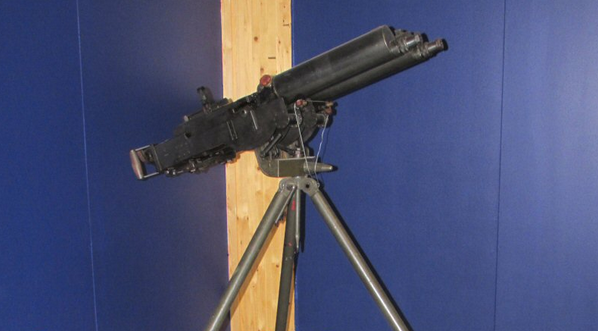
At the end of 1939, the UK donated 100 machine guns to Vickers Mk 1 7,7 mm caliber (.303 British). Water-cooled guns were supplied on standard infantry machines, but they did not succeed in repelling the attacks of the advancing Soviet troops. Since 7,7-mm cartridges were used in the Air Force, British machine guns were installed on the tools at hand and used in the air defense of airfields. Similarly, more than 40 air-cooled Vickers were used.
At the beginning of 30's, Aimo Lahti was tasked to develop an aircraft machine gun for use in synchronous and turret versions. The machine gun known as the L-34 with a 900 firing rate per minute, based on the L-33 infantry, used a 75 cartridge disk. This pattern might not have been bad in the 20s, but by the beginning of World War II it was clearly outdated. During the continuation of the war around the 80 machine guns L-34 defended the Finnish airfields on the ground.
Part of the infantry machine guns with disk shops supplied anti-aircraft sights and installed on swivels. In addition, there were specialized limited-edition modifications on the L-33 / 36 and L-33 / 39 anti-aircraft machines, which remained in service until the end of the 80-x.
As can be seen, in Finnish LSDs, which differed constructively among themselves, non-interchangeable cartridges of various calibers and manufacturers were used. All this greatly hampered the operation, supply and repair.
Until 1944, the raids of Soviet bombers on Finnish cities were of occasional disturbing nature. In 1941-1943 there were 29 raids on Helsinki, in total about 260 bombs fell on the city. The bombardment intensity increased dramatically in February 1944. Thus, the Soviet long-range aviation acted as a means of political pressure to withdraw Finland from the war. According to Finnish data, in three raids produced at night with 6 to 7, 16 to 17 and 26 February 27 attended by more than 2000 bombers: IL-4, Li-2, B-25 Mitchell and A-20 Boston, which dropped more than 16000 high-explosive and incendiary bombs. The Finns claimed that the 22 bomber was shot down by anti-aircraft artillery fire, and German pilots flying the Bf 4G-109 claimed to have won the 6. This data is most likely overestimated, as are the combat accounts of Finnish fighter pilots.
In total, during the reflection of three massive raids heavy anti-aircraft guns fired around 35 000 shells caliber 75-88 mm. It should be borne in mind that the adjustment of anti-aircraft fire was carried out according to radar data. After the first bombardment on the night from 6 to 7 in February, which the Finnish air defense almost overslept, during the next two parts of the anti-aircraft artillery and night interceptors were preparing for battle in advance. The important role in this was played by the Finnish radio interception stations, which listened to the radio exchange between the crews of the Soviet bombers and control points at the airfields. Despite timely notification and bringing in an increased combat readiness of the air defense system, the Finnish anti-aircraft artillery and the German night interceptors could not prevent the enemy from making unacceptable losses. The weak industrial base, the lack of the necessary engineering and design potential and the scarcity of material resources did not allow Finland to organize a truly effective air defense system, to set up the production of the necessary anti-aircraft weapons and fighters.
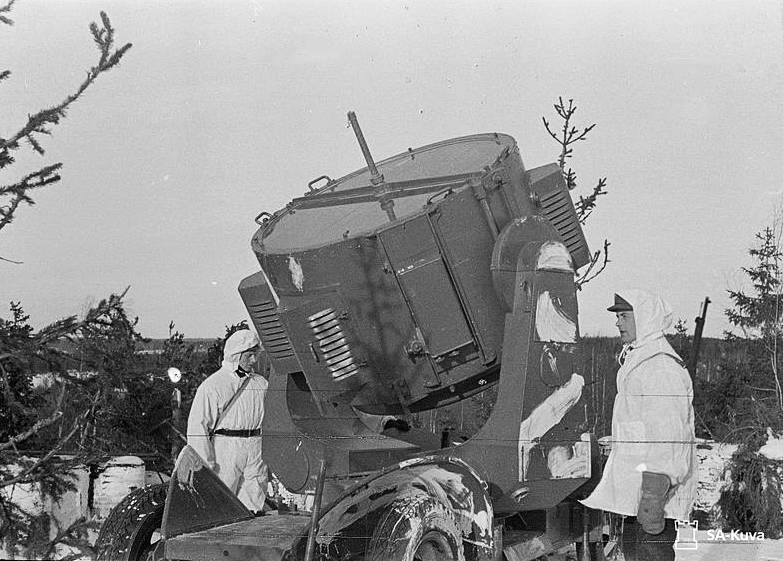
Having got involved in the war with the Soviet Union on the side of Germany in June 1941, the Finns hoped for territorial gains, but in the end they were forced to make a humiliating peace. According to the provisions of the Paris Peace Treaty concluded by 10 in February of 1947, Finland paid a large contribution, as well as ceded the USSR territory of Petsamo and islands in the Gulf of Finland.
Продолжение следует ...
Based on:
http://www.jaegerplatoon.net/AA_GUNS3.htm
http://www.visittuusulanjarvi.fi/en/see-and-do/culture-and-museums/anti-aircraft-museum
http://www.virtualpilots.fi/hist/WW2History-NightOfTheBombers.html
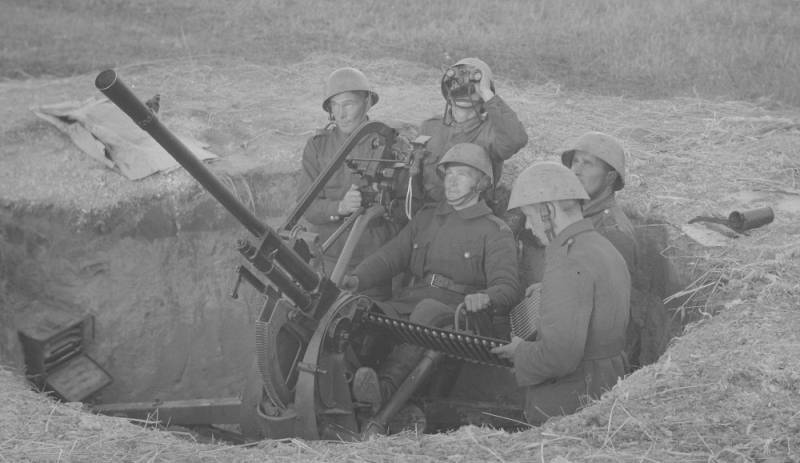
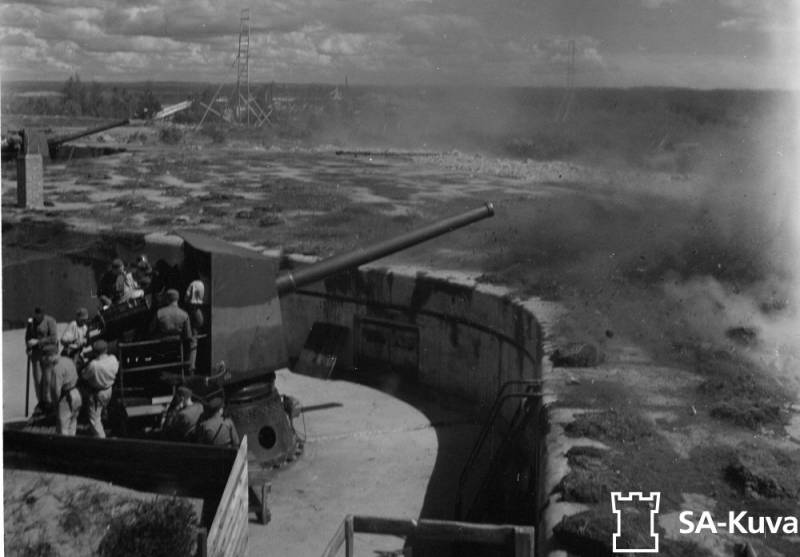
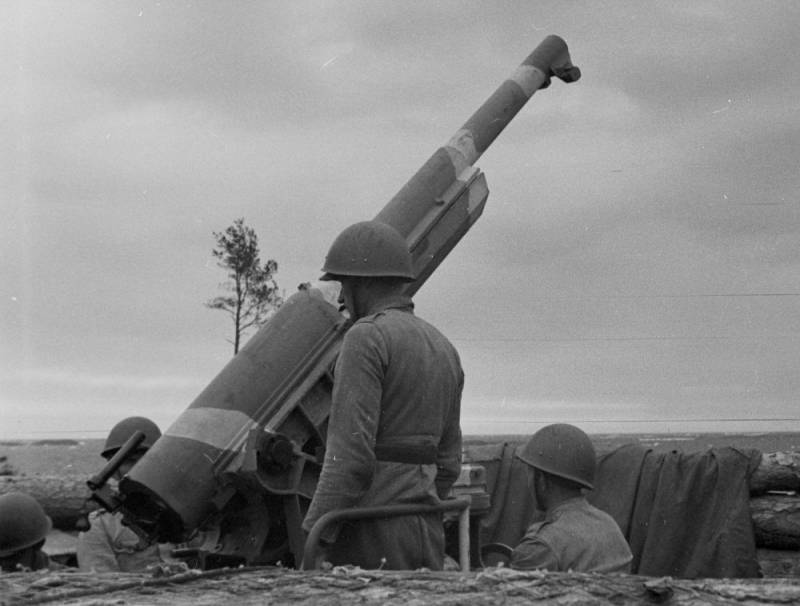
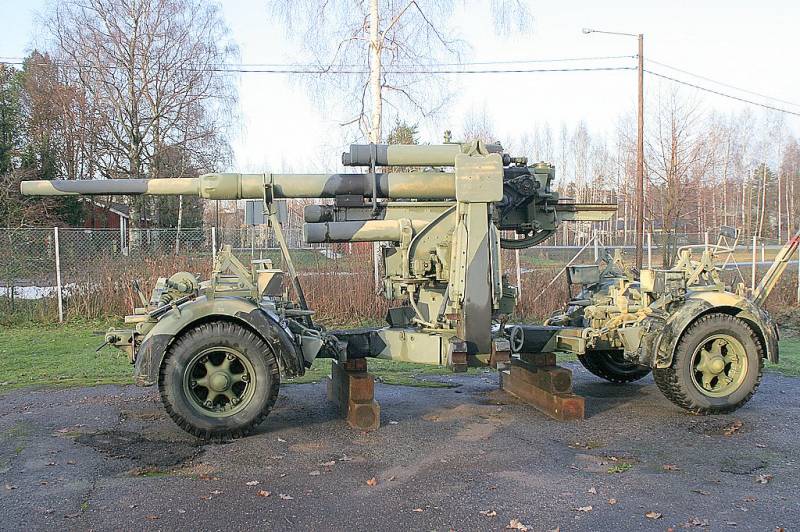
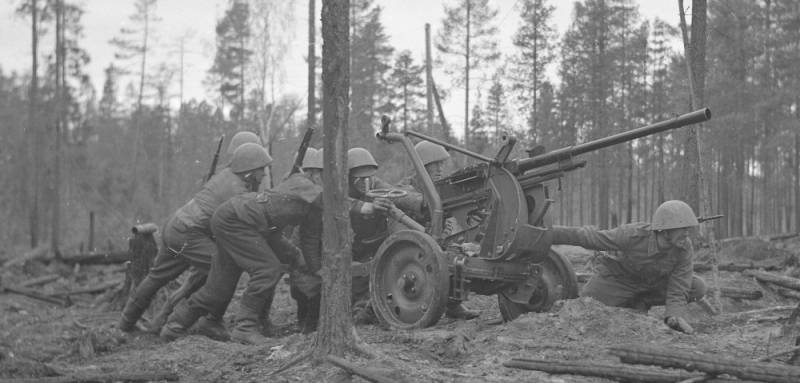
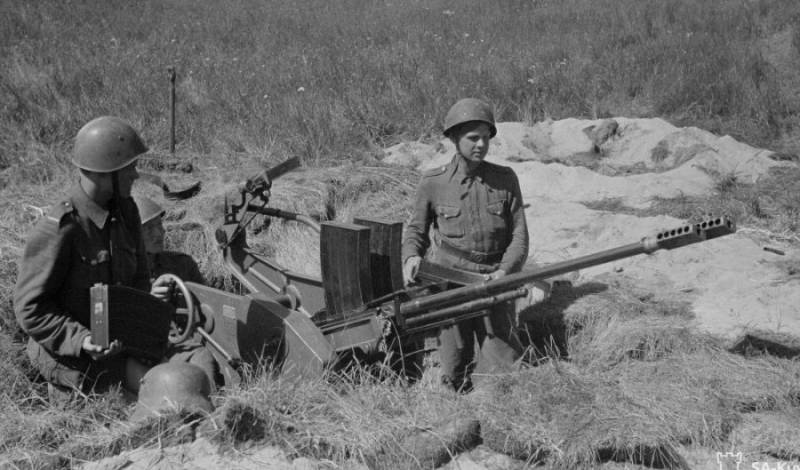
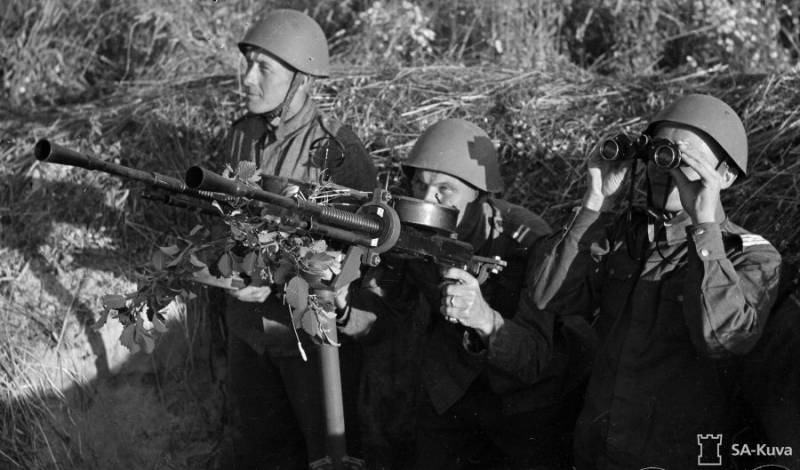
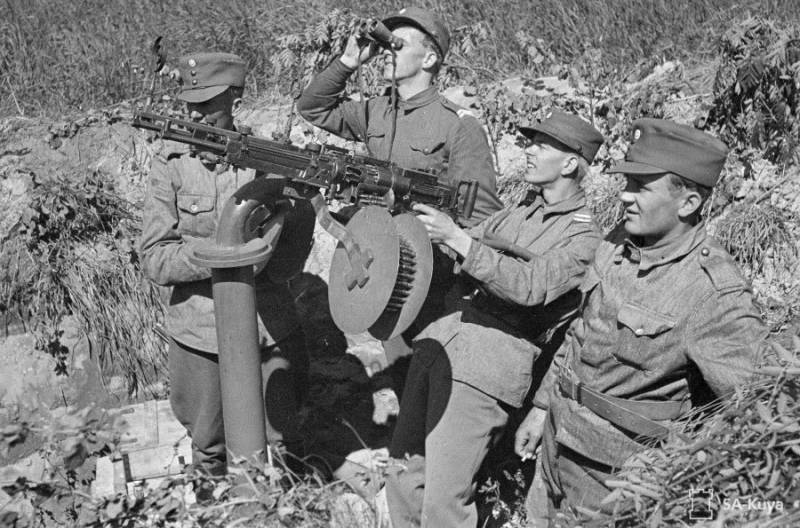
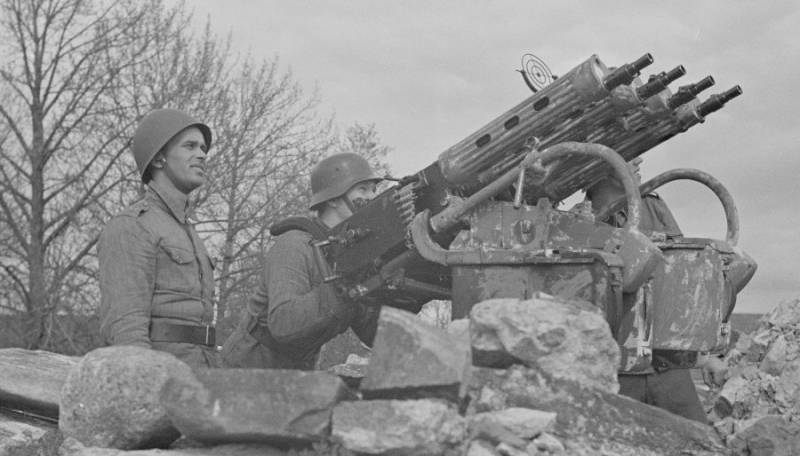
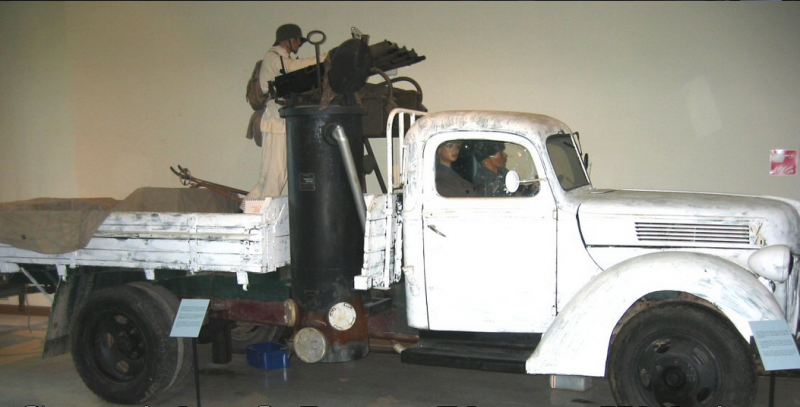
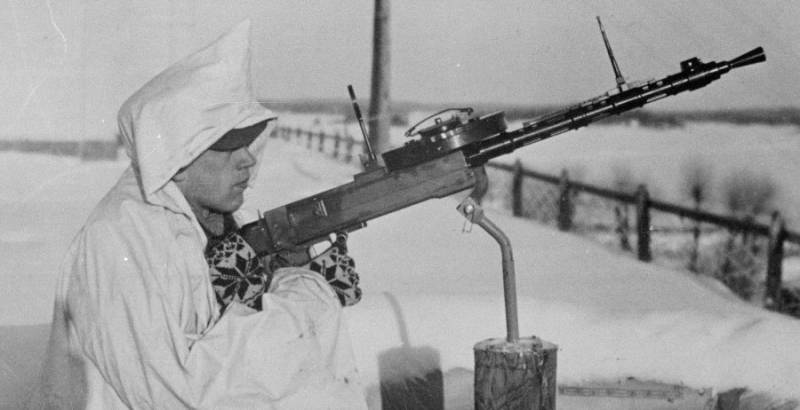
Information